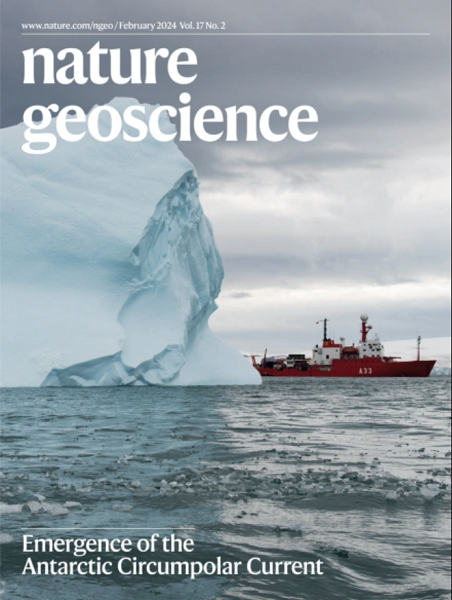Ultralow velocity zone and deep mantle flow beneath the Himalayas linked to subducted slab
IF 15.7
1区 地球科学
Q1 GEOSCIENCES, MULTIDISCIPLINARY
引用次数: 0
Abstract
The origins of ultralow velocity zones, small-scale structures with extremely low seismic velocities found near the core–mantle boundary, remain poorly understood. One hypothesis is that they are mobile features that actively participate in mantle convection, but mantle flow adjacent to ultralow velocity zones is poorly understood and difficult to infer. Although deep mantle anisotropy observations can be used to infer mantle flow patterns, ultralow velocity zone structures are often not examined jointly with these observations. Here we present evidence from seismic waves that sample the lowermost mantle beneath the Himalayas for both an ultralow velocity zone and an adjacent region of seismic anisotropy associated with mantle flow. By modelling realistic mineral physics scenarios using global wavefield simulations, we show that the identified seismic anisotropy is consistent with horizontal shearing orientated northeast–southwest. Based on tomographic data of the surrounding mantle structure, we suggest that this southwestward flow is potentially linked to the remnants of the subducted slab impinging on the core–mantle boundary. The detected ultralow velocity zone is located at the southwestern edge of this anisotropic region, and therefore potentially affected by strong mantle deformation in the surrounding area. The presence of an ultralow velocity zone and seismic anisotropy in the lowermost mantle beneath the Himalayas is linked to subducted slab remnants and southwest mantle flow, according to analyses of seismic waves and mantle anisotropy measurements.


喜马拉雅山下与俯冲板块有关的超低速度带和深地幔流
超低速带是在地核-地幔边界附近发现的地震速度极低的小尺度结构,人们对其起源仍然知之甚少。一种假设认为它们是积极参与地幔对流的移动特征,但对邻近超低速带的地幔流动了解甚少,难以推断。虽然深部地幔各向异性观测可用于推断地幔流动模式,但超低速度带结构往往没有与这些观测联合起来进行研究。在此,我们通过对喜马拉雅山下最底层地幔的地震波取样,提出了超低速带和与地幔流动相关的邻近地震各向异性区域的证据。通过利用全球波场模拟现实的矿物物理情景,我们表明已确定的地震各向异性与东北-西南方向的水平剪切一致。根据周围地幔结构的层析成像数据,我们认为这种西南向流动可能与撞击地核-地幔边界的俯冲板块残余有关。探测到的超低速度区位于这一各向异性区域的西南边缘,因此可能受到周边地区强烈地幔变形的影响。
本文章由计算机程序翻译,如有差异,请以英文原文为准。
求助全文
约1分钟内获得全文
求助全文
来源期刊

Nature Geoscience
地学-地球科学综合
CiteScore
26.70
自引率
1.60%
发文量
187
审稿时长
3.3 months
期刊介绍:
Nature Geoscience is a monthly interdisciplinary journal that gathers top-tier research spanning Earth Sciences and related fields.
The journal covers all geoscience disciplines, including fieldwork, modeling, and theoretical studies.
Topics include atmospheric science, biogeochemistry, climate science, geobiology, geochemistry, geoinformatics, remote sensing, geology, geomagnetism, paleomagnetism, geomorphology, geophysics, glaciology, hydrology, limnology, mineralogy, oceanography, paleontology, paleoclimatology, paleoceanography, petrology, planetary science, seismology, space physics, tectonics, and volcanology.
Nature Geoscience upholds its commitment to publishing significant, high-quality Earth Sciences research through fair, rapid, and rigorous peer review, overseen by a team of full-time professional editors.
 求助内容:
求助内容: 应助结果提醒方式:
应助结果提醒方式:


